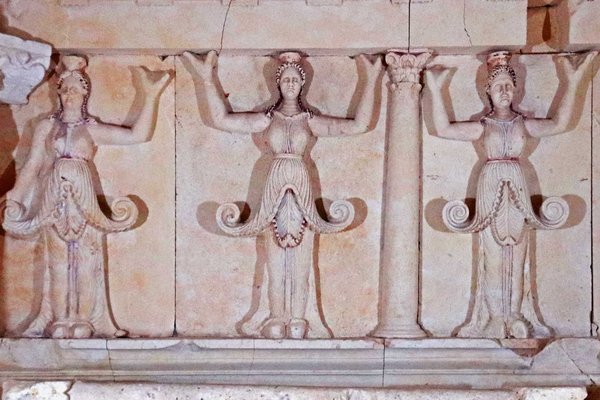Bulgaria
Thracian tomb of Sveshtari
The Thracian Tomb of Sveshtari comprises a hypogeum from the 3rd century BCE.
The tomb's architectural decor is considered to be unique, with polychrome half-human, half-plant caryatids and painted murals. It represents local art from the Getes Thracian peoples, which was inspired by Hellenism.
Community Perspective: There are three tombs to explore here and all are authentic, so it provides a better visitor experience than the Thracian Tomb at Kazanlak. Read Els’s review for what to expect of a visit.
Site Info
Official Information
- Full Name
- Thracian tomb of Sveshtari (ID: 359)
- Country
- Bulgaria
- Status
-
Inscribed 1985
Site history
History of Thracian tomb of Sveshtari
- 1985: Inscribed
- Inscribed
- Type
- Cultural
- Criteria
- i
- iii
Links
- UNESCO
- whc.unesco.org
- Official
-
- bulgariatravel.org — Bulgaria Travel Sveshtarska Tomb
- Related
-
- getika.com — Thracian tribe Getae in Isperih
- journals.worldnomads.com — Trip report
- novinite.com — Link
All Links
UNESCO.org
- whc.unesco.org — whc.unesco.org/
Official Website
- bulgariatravel.org — Bulgaria Travel Sveshtarska Tomb
Related Resources
- getika.com — Thracian tribe Getae in Isperih
- journals.worldnomads.com — Trip report
- novinite.com — Link
News Article
- Aug. 28, 2014 dailymail.co.uk — New treasures found near Sveshatari
- Sept. 28, 2013 novinite.com — Thracian chariot and horse skeletons found near Sveshtari
Community Information
- Community Category
- Archaeological site: Classical (other)
Travel Information
Guided Tour Only
Recent Connections
-
Roman Province in its official title
Thrace, Created as Provincia Thracia in… -
Shoe covers required
To enter the tomb -
Guided Tour Only
"You’ll also be accompanied by a guide,…
Connections of Thracian tomb of Sveshtari
- Trivia
-
-
Total Solar Eclipse since Inscription
11 August, 1999
-
- History
- World Heritage Process
-
-
Perfect Inscriptions
1985 -
Single Monuments
Also meets criterion i: masterpiece of human creative genius.
-
- Religion and Belief
-
-
Horse Burials
"Note that the bone matter found during excavation bears witness to the horse sacrifices which accompagnied (sic) the funeral rites." (AB)
-
- Constructions
-
-
Unfinished constructions
The body of the diseased ruler was laid in the chamber. The unfinished decoration on the walls and the ceiling shows that he had died before his eternal home was completed. - official website -
Hypogea
-
Tombs
-
Tumuli
The tomb is covered by a burial mound
-
- Timeline
-
-
Built in the 3rd century BC
dates back to the 3rd century BC (AB ev)
-
- WHS Hotspots
- Science and Technology
-
-
Recently discovered
In 1982, according to the Unesco documentation
-
- Visiting conditions
-
-
Guided Tour Only
"You’ll also be accompanied by a guide, explaining the history in either Bulgarian or English." -
Shoe covers required
To enter the tomb
-
- WHS Names
-
-
Roman Province in its official title
Thrace, Created as Provincia Thracia in 46ADSee en.wikipedia.org
-
News
- dailymail.co.uk 08/28/2014
- New treasures found near Sveshatari
- novinite.com 09/28/2013
- Thracian chariot and horse skeleto…
Recent Visitors
Visitors of Thracian tomb of Sveshtari
- Adrian Turtschi
- alex
- Alexander Barabanov
- Alexander Lehmann
- A. Mehmet Haksever
- Anna Wludarska
- Argo
- Astraftis
- Atila Ege
- Bin
- Brendan Carroll
- Cezar Grozavu
- Christoph
- Clyde
- Corinne Vail
- Cyberczar
- Dagmara
- DavidS
- Dimitar Krastev
- Elis
- Els Slots
- Emili Xaus
- Erik Jelinek
- Eva Kisgyorgy
- Feldhase
- Filip Murlak
- FS
- George Gdanski
- GeorgeIng61
- GerhardM
- Hadrianus
- Harald T.
- Harry Mitsidis
- H Beswick
- Hubert
- Iain Jackson
- Janos
- Jarek Pokrzywnicki
- Jasam
- Joel on the Road
- John Smaranda
- Jonas Kremer
- jonathanfr
- Joyce van Soest
- Justin Rickey
- Knut
- Lisu Marian
- Ludvan
- Luis Filipe Gaspar
- Maciej Gil
- Małgosia Łupicka
- Mathijs
- Mihai Dascalu
- Mikko
- Milan Jirasek
- nan
- Nihal Ege
- Patrik
- petar
- Peter Lööv
- Petteri
- Philipp Leu
- Philipp Peterer
- Piotr Wasil
- Rafał Kałczuga
- Randi Thomsen
- Roger Ourset
- Roman Bruehwiler
- Sabrina Liebehentschel
- Shandos Cleaver
- Slavi
- Solivagant
- Stanimir
- Stanislaw Warwas
- StaziG
- Stijn
- Svein Elias
- Szucs Tamas
- Tamara Ratz
- Taotao Chen
- Tarquinio_Superbo
- Thomas Buechler
- Thomas van der Walt
- triath
- Tsunami
- UncleSlavi
- Valentina
- WalGra
- Wojciech Fedoruk
- Wo_ko
- YaroMir
- Zoë Sheng
Community Reviews
Show full reviews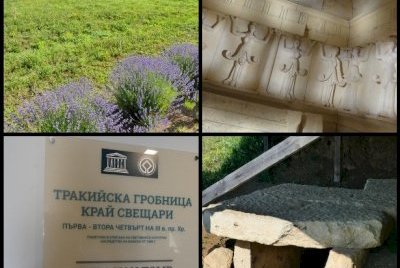
I visited this WHS in 2023. Although it certainly is less colourful than the Thracian tombs of Kazanlak and Alexandrovo, not only is it once again intact (its restoration reminded me a lot of Seokguram in South Korea) but it is also possible to visit its interior, which is most definitely its highlight (even though photography isn't allowed). Apparently the tomb is closed in winter and in summer it is closed on Mondays and Tuesdays.
I drove pretty early to the area, well ahead of the opening hours, so I had some time to kill which I spent exploring the nearby 4th and 3rd century BC razed Getic fortification and citadel remains, which together with the Sveshtari tomb make up what is called the Sboryanovo Archaeological Reserve. No matter how diverse and interesting Thracian heritage might be, time, destruction and rebuilding in times of war and peace, continual habitation, and treasure-hunting have wiped out a lot of it, reducing it to a set of tombs and shrines here, a treasure there, and a shrine in what today appears to be the middle of nowhere (a stark contrast when compared to the Kazanlak tomb!). Today archaeological research of the remains continues, but the trenches and low stone walls are not particularly spectacular. The south city wall can be seen passing through the main road from the Sveshtari Tomb to the village of Malak Porovets. Another piece of the fortifications, from the 3rd to 1st century BC, is in the Polyanata …
Keep reading 0 comments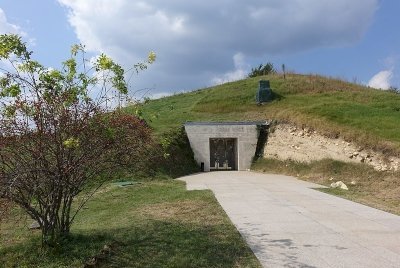
The 3rd century BC Thracian Tomb of Sveshtari is a richly decorated tomb with a unique architectural decor. It was the second WHS that we visited during the 2018 WH Travellers Meeting. In advance I had tried to make a reservation for our group of 15 - I had read that sometimes you have to wait a while at the site before a guide is available. The e-mail contact in English with the visitor center proved to be rather inconclusive (similar to my experiences with other agencies in Bulgaria). When we arrived at 3 o'clock though we were expected and welcomed by an English-speaking guide.
The tomb is located underground, under an 11-meter-high burial mound. One can only enter it on a guided tour. The 'long' tour (along the inscribed site and 2 other tombs) costs 15 Lev (7.50 EUR). We had to wait until another group left the tomb – there was not enough space for many visitors at the same time.
Many burial mounds have been discovered in this area, but most are empty. Near the adequately equipped visitor center there are 3: the great burial mound of the king and his wife, plus two smaller burial mounds in which groups of aristocrats were buried. A footpath connects them.
The large tomb is protected as if it were a Swiss bank vault. After entering a pin code, the guide opened the two sturdy automatic sliding doors that have been placed in the entrance quite recently. …
Keep reading 0 comments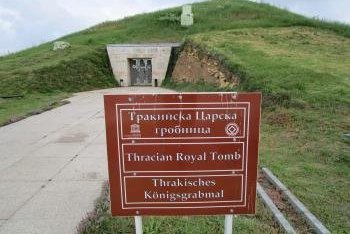
I visited the Thracian Tomb of kazanlak in January and then of Sveshtari in May.
Staying overnight in Isperih, I took a bus from the main bus station of Isperih to the village of Sveshtari and from there walked about 2 km to the site. The bus leaves about once every two hours.
Right after me a few dozens of German cyclists arrived followed by their large bus, which meant that one German-speaking guide gave them a tour of the site and one English-speaking guide gave me a personal tour.
She took me to the 3 tombs on the site (but there are many more out of the site), so unlike the only one tomb at the Kazanlak site, this site resembles more or less like the WHS at Vergina in Greece.
The main tomb / room is structurally supported by caryatids, which is unusual in Thracia as well as in the USA, so I thought it would be nice to have such a tomb.
Unfortunately, no photos were allowed inside of the tombs.
Keep reading 0 comments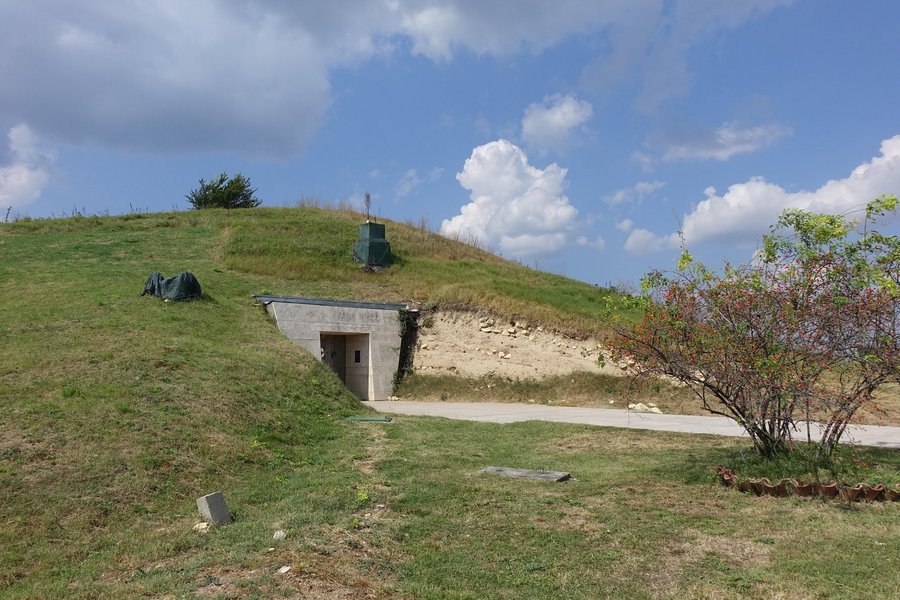
I reached the site by taxi from Isperih, a 9km journey which cost 20 lev return. Taxis gather at the bus station, 1km north of the railway station.
The tombs are open from Wednesday to Sunday only, entry fee 10 lev.
Keep reading 0 comments
My husband and I have visited the Sveshtari Tomb the last year and we were delighted by its beauty. There is a regime of controlled access to the tomb, which means that the visit can be done only with a guide from the office of the Sborianovo Archaelogocal reserve. The guided tour also provide visit to another Thracian tomb (the total of the tombs is more than 100) and the guide explains all the details of the style, the epoch and the importance of the tomb.
Keep reading 0 comments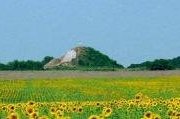
The Tomb of Shvestari is Bulgaria’s second UNESCO-inscribed Thracian tomb (see also my review of Kazanlak). It is claimed to be “the finest Thracian tomb in Bulgaria” but, surprisingly, wasn’t excavated and discovered until 1982. When we were there in 2000 we could not get in. As you can see from the photo, that is a distinct negative, as the mound itself sitting in a field is not that interesting! I understand from some web sites however that, as of 2006, it might be possible – albeit with prior arrangements, to get inside. I quote “The whole is encased in a protective shell and is open to visitors, though at present, at irregular times - it's vital that you ring or call in at the museum in Isperih or at Aristour in Shumen to check that it's open before making a special trip”.
Perhaps that part of Bulgaria has become more “tourist savvy” in the intervening years. We had great difficulty even getting locals to understand what it was we wanted to see! The nearest village is over 2kms away and the site wasn’t signposted along any of the several possible routes. Our few words of Russian for “Please - where is?” (We had no Bulgarian and English, French or Spanish didn’t help) whilst pointing at a print out of the UNESCO page for the site which contained a picture of the interior didn’t seem to lead anyone to link the presence of some “lost” tourists to this site and …
Keep reading 0 comments
